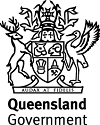Published Friday, 06 August, 2021 at 01:25 PM

Minister for the Environment and the Great Barrier Reef and Minister for Science and Youth Affairs
The Honourable Meaghan Scanlon
Diamantina National Park de-fenced
Close to 300km of old barbed-wire fencing along Diamantina National Park has been removed to protect native animals including the rare night parrot.
Environment Minister Meaghan Scanlon said with COVID-19 economic recovery plan funding from the Palaszczuk Government, rangers and conservation groups have been able to progressively de-fence the former cattle station, with the fencing posing a threat to low-flying birds, gliders and bats.
The fencing was installed by farmers to manage livestock before the park was purchased by the Queensland Government in 1992.
“It’s been close to 30 years since the land was transformed into 507,000 hectare national park, and in that time we’ve seen many resident and migratory bird species return to the local wetlands, which act as a haven in an otherwise arid region,” Minister Scanlon said.
“Resident birds, such as the critically-endangered night parrot, first spotted in 2016 are famous for flying low and fast – and this leaves them very little time to avoid fences.
Minister Scanlon said rangers enlisted the help of the Australian Wildlife Conservancy during the first phases of fence removal on the park, and Bush Heritage Australia to remove fences partitioning Pullen Pullen Nature Reserve and Diamantina National Park.
“The initial focus of the project was to remove fencing from areas of known night parrot habitat and likely flyways, with much of the early work being done by hand.
“That was hard, arduous work, so a tailor-made tractor was purchased with a wire winder on the front rolling up the fencing.
With farming now ceased on the site, the fencing was no longer serving a purpose and significant amounts of it had fallen into disrepair.
“Removing the fencing from this location will play an important role in protecting the local populations of rare species of birds that have been found there since the national park was declared.
“These populations face a range of threats and birds can sometimes be injured on fencing, so initiatives like this one can only help with their long-term survival.
“I’m thankful for the efforts of the rangers and conservation groups, because it plays an important role in the Queensland Government’s commitment to protecting and conserving the rare and threatened species that call Diamantina National Park, and Pullen Pullen Nature Reserve, home.
“It’s a unique way we’ve been able to help the environment alongside other major projects as part of our record $1.4 billion investment to support conservation and create jobs during our COVID-19 economic recovery.”
Link to vision: https://www.dropbox.com/sh/u7yft2osbyxsy37/AAC32LaJU_x2KTj7Tw6zlXFta?dl=0
ENDS
Media contact: Francis Dela Cruz – 0420 592 078

